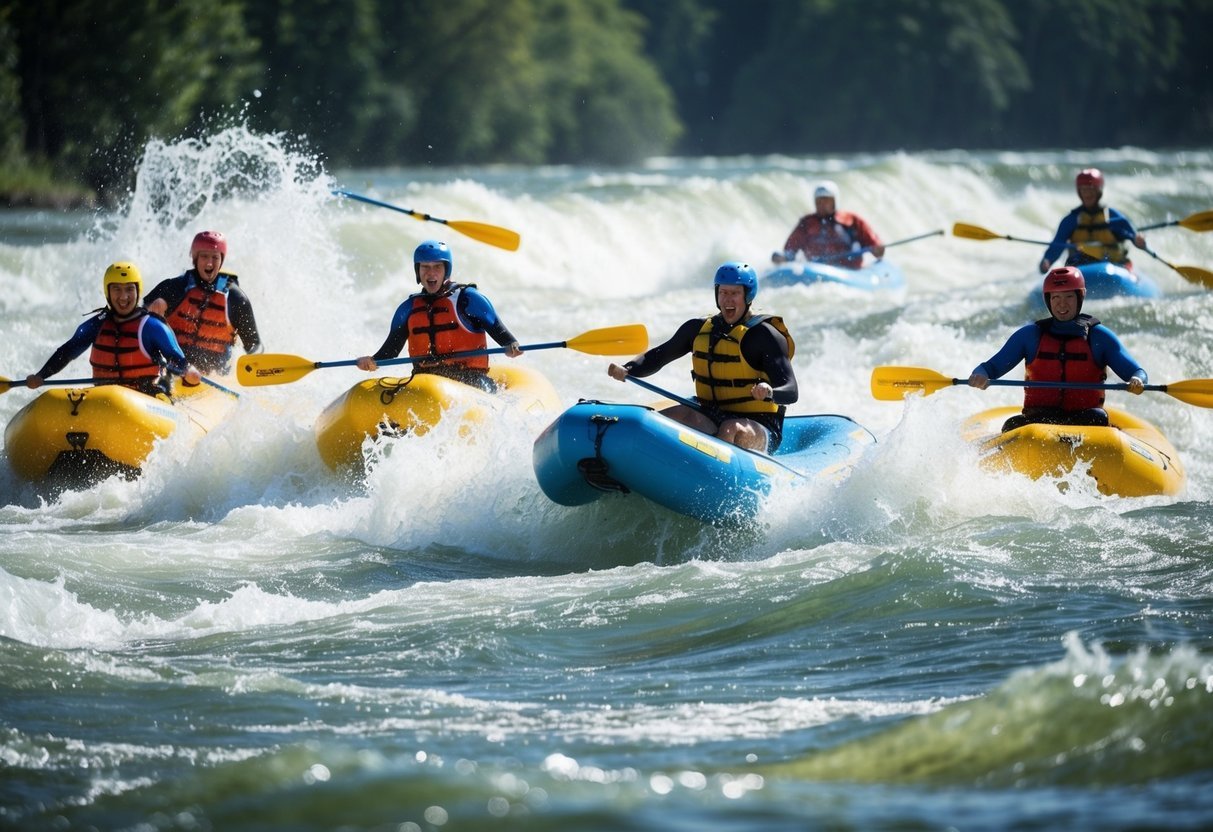White-water rafting is an exhilarating sport that combines teamwork, skill, and adrenaline.
As you navigate through rushing rivers and tackle challenging rapids, you’ll witness the incredible feats of elite rafting teams pushing the boundaries of what’s possible on the water.
These top-tier teams showcase the pinnacle of white-water rafting, demonstrating exceptional coordination, strategy, and courage in high-stakes competitions. From mastering technical maneuvers to conquering some of the world’s most notorious whitewater rapids, these athletes are making waves in the extreme sports world.
Get ready to dive into the thrilling world of competitive rafting and discover the teams that are taking the sport to new heights.
1) Team Thunder Rapids
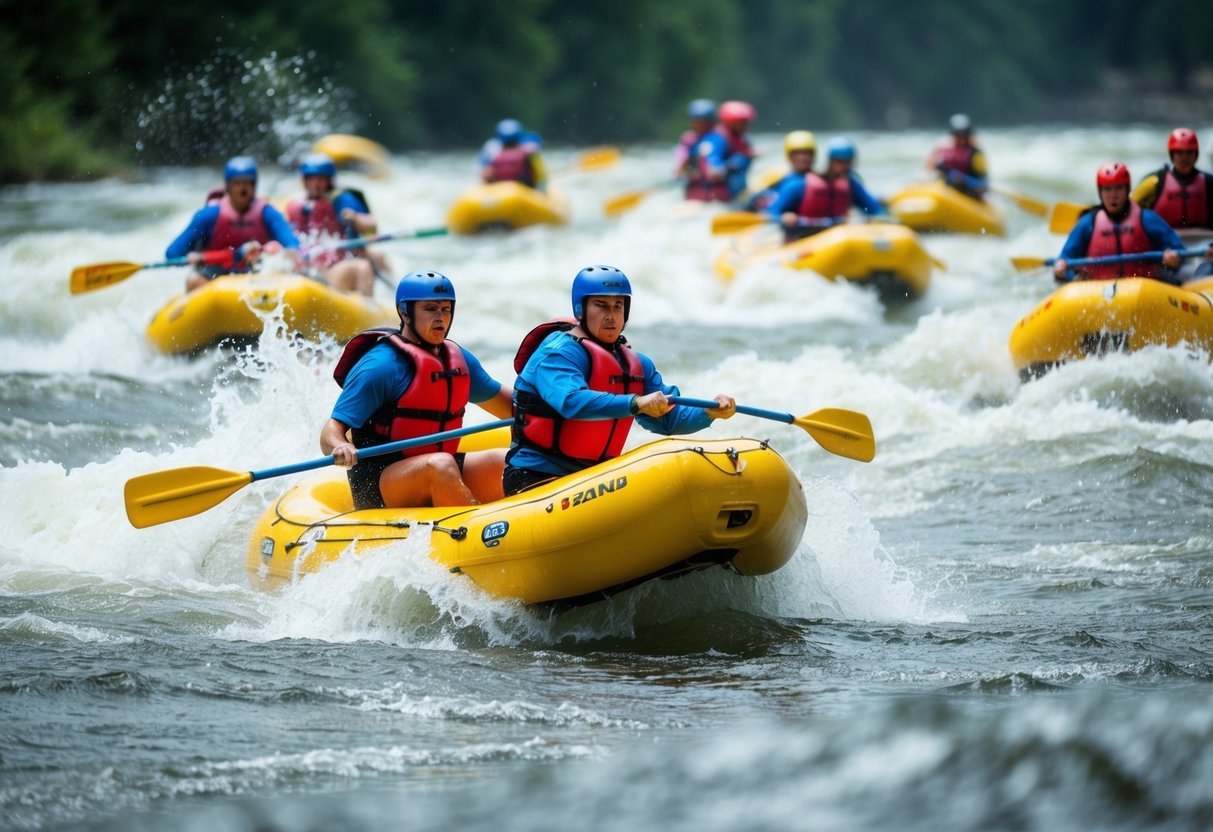
You’ve probably heard of Team Thunder Rapids if you’re into white-water rafting.
These guys are making serious waves in the competitive scene.
Based out of Colorado, this crew of six has been tackling some of the gnarliest rapids across the country.
Their skill and teamwork are something to behold.
What sets Team Thunder Rapids apart is their unique paddling technique.
They’ve developed a synchronized stroke that lets them power through even the roughest waters.
You might have seen their viral videos online.
Remember that insane run down the Chattooga River’s Bull Sluice? That was them.
They’re not just about the thrills, though.
Team Thunder Rapids is big on safety too.
They regularly host workshops to teach proper rafting techniques to newbies.
Keep an eye out for these guys at the next big rafting competition.
With their track record, you can bet they’ll be gunning for the top spot.
2) Rapid Runners Crew
You’ve probably heard whispers about the Rapid Runners Crew if you’re into whitewater rafting.
These guys are making some serious waves in the sport.
Based out of Colorado, they’ve been tearing up rivers across the US for the past five years.
What sets the Rapid Runners apart is their unique approach to teamwork.
They’ve developed a system of hand signals that lets them communicate even in the loudest rapids.
It’s like watching a well-oiled machine in action.
Their captain, Sarah “The Trout” Thompson, is a legend in her own right.
She’s got a knack for reading the river that seems almost supernatural.
Under her leadership, the crew has tackled some of the most notorious whitewater rapids in the world.
The Rapid Runners aren’t just about conquering rapids, though.
They’re big on conservation too.
You’ll often find them organizing river cleanups when they’re not on the water.
If you’re looking to up your rafting game, keep an eye on these folks.
They offer training camps a few times a year where you can learn from the best.
Who knows? You might just pick up some tricks that’ll make you the star of your next rafting trip.
3) Splash Squad Elite
You’ve probably heard whispers about the Splash Squad Elite.
These daredevils are making serious waves in the white-water rafting world.
The team’s known for their lightning-fast reflexes and uncanny ability to read the river.
You’d swear they can predict every twist and turn before it happens.
Splash Squad Elite’s secret weapon? Their unbeatable teamwork.
These folks move like a single organism when they’re on the water.
It’s pretty impressive to watch.
They’ve been crushing it in Class IV rapids lately, tackling some of the most challenging courses out there.
Their fearless approach has earned them a loyal fanbase.
You might spot the Splash Squad Elite at major tournaments like the Euro Cup White Water Rafting.
They’re always a crowd favorite, bringing energy and excitement to every event.
Keep an eye on these rising stars.
With their skill and determination, you can bet they’ll be making even bigger splashes in the future.
4) Cascade Champions
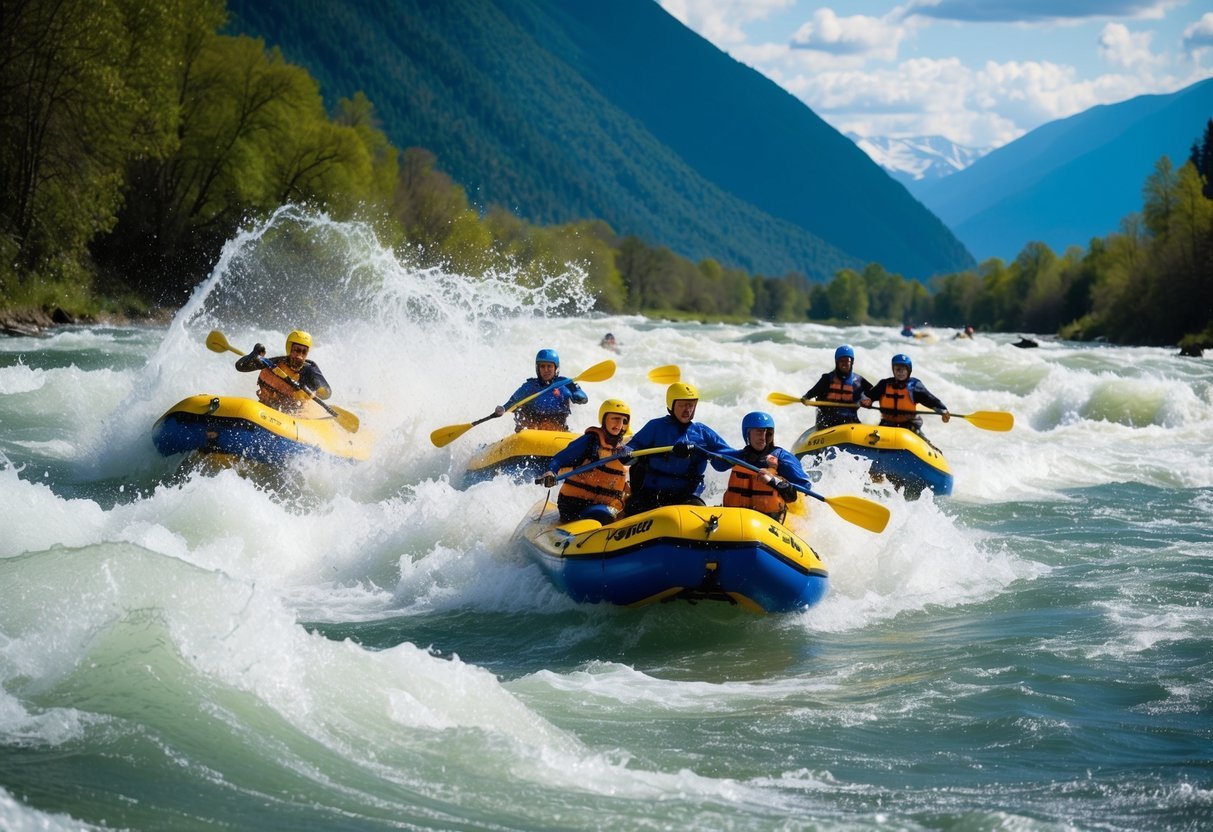
The Cascade Champions are making waves in the white-water rafting world.
You’ve probably heard whispers about this team’s incredible skills on the rapids.
Based in the Pacific Northwest, they’ve mastered the art of navigating the region’s challenging waterways.
Their home turf includes some of the most gnarly rapids you can imagine.
What sets the Cascade Champions apart is their teamwork.
These folks move like a single organism when they’re on the water.
It’s like watching a well-oiled machine in action.
Their captain, Sarah “Rapids” Rodriguez, is a legend in her own right.
You might’ve seen her pulling off some insane maneuvers in competitions.
The team’s specialty? Tackling Class 4 and 5 rapids like they’re a walk in the park.
They make it look easy, but don’t be fooled – it’s the result of years of practice.
If you’re lucky, you might catch them training on the Wenatchee River.
During the spring melt-off, this river turns into a white-water playground.
Keep an eye out for the Cascade Champions at upcoming competitions.
You’ll be amazed at how they handle those waves!
5) River Rush Mavericks
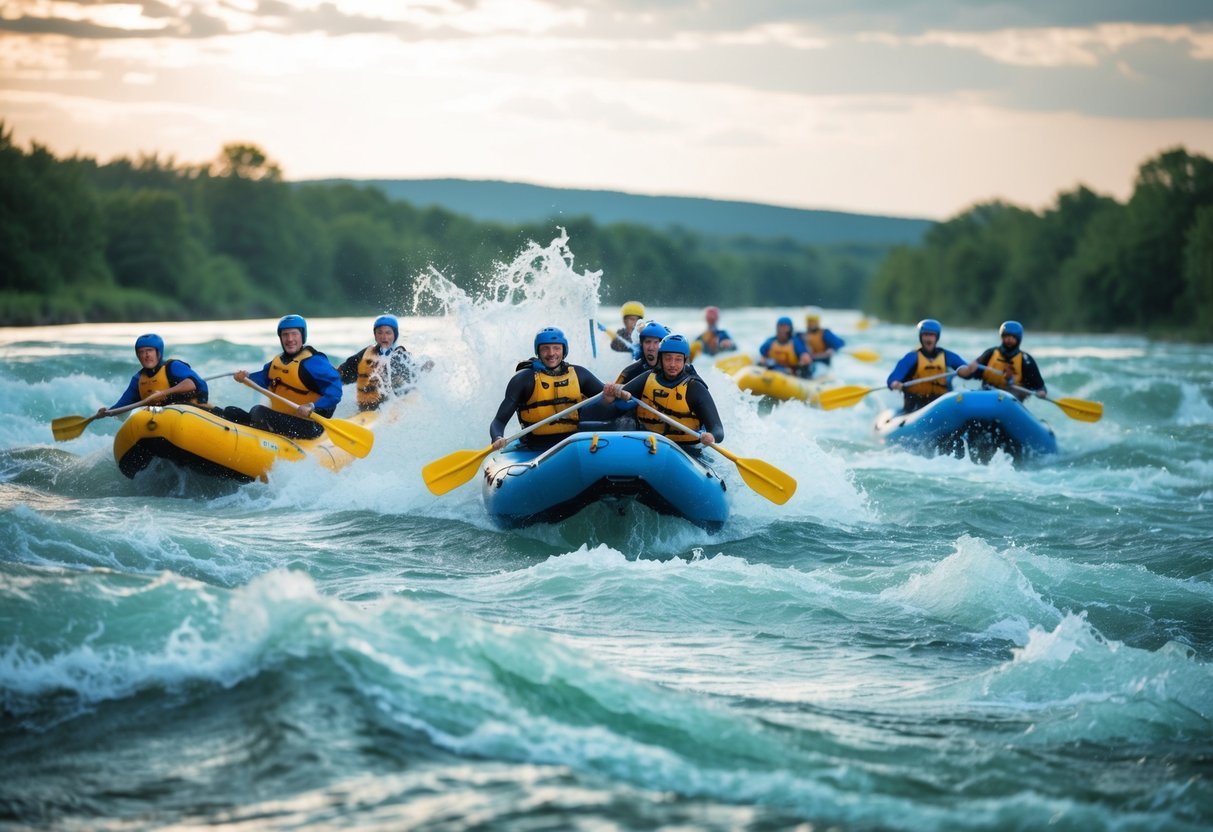
You’ve probably heard of the River Rush Mavericks if you’re into extreme white-water rafting.
These guys are making a real splash in the competitive scene.
The Mavericks are known for their daring maneuvers and perfect teamwork.
They tackle some of the most challenging rapids in the country with seemingly effortless coordination.
What sets them apart is their innovative approach to training.
The team practices on dry land as much as on water, honing their reflexes and communication skills.
Their captain, Maya Chen, is a former Olympic kayaker.
Her experience brings a unique edge to their strategies.
You’ll often spot the Mavericks taking on Class V rapids that other teams shy away from.
Their fearless attitude has earned them a devoted fan base.
In recent competitions, they’ve consistently placed in the top three.
Their run on the Gauley River last year was particularly impressive, setting a new course record.
History of White-Water Rafting Competitions
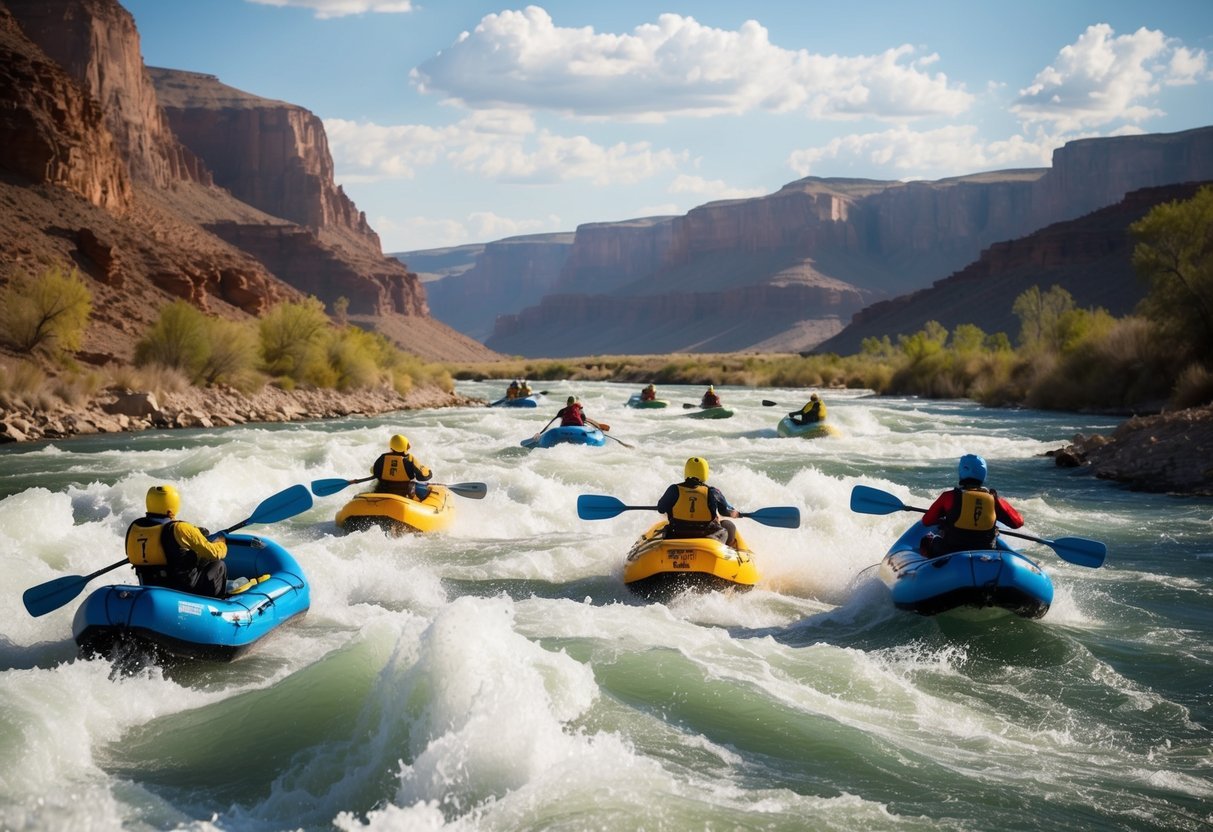
White-water rafting competitions have evolved from adventurous river exploration to thrilling international events.
These contests showcase the skills of elite paddlers as they navigate treacherous rapids and swift currents.
Early Beginnings
You might be surprised to learn that white-water rafting’s competitive roots trace back to the 1840s.
Lieutenant John Fremont and Horace H. Day pioneered the use of rubber rafts to explore the Rocky Mountains.
Their daring expeditions laid the groundwork for future river racing.
In the early 20th century, rafting enthusiasts began organizing informal races on local rivers.
These grassroots events tested participants’ courage and paddling prowess.
As word spread, more people were drawn to the excitement of conquering wild rapids.
By the 1950s, organized competitions started popping up in various countries.
Kayaking and canoeing events at the 1972 Munich Olympics helped boost interest in white-water sports.
Major Milestones
The sport really took off in the 1980s and 1990s. International competitions gained popularity, attracting top athletes from around the globe.
The International Rafting Federation (IRF) was established in 1997, bringing structure and standardization to the sport.
Key achievements include:
- First World Rafting Championships (1989)
- Introduction of slalom kayaking in the Olympics (1992)
- Creation of the IRF World Cup Series (2001)
Today, you can watch world-class rafters compete in various disciplines:
- Slalom
- Downriver racing
- Freestyle
These events showcase incredible teamwork, strategy, and physical prowess.
As equipment and techniques continue to evolve, you can expect even more thrilling competitions in the future.
Training Techniques of Top Teams
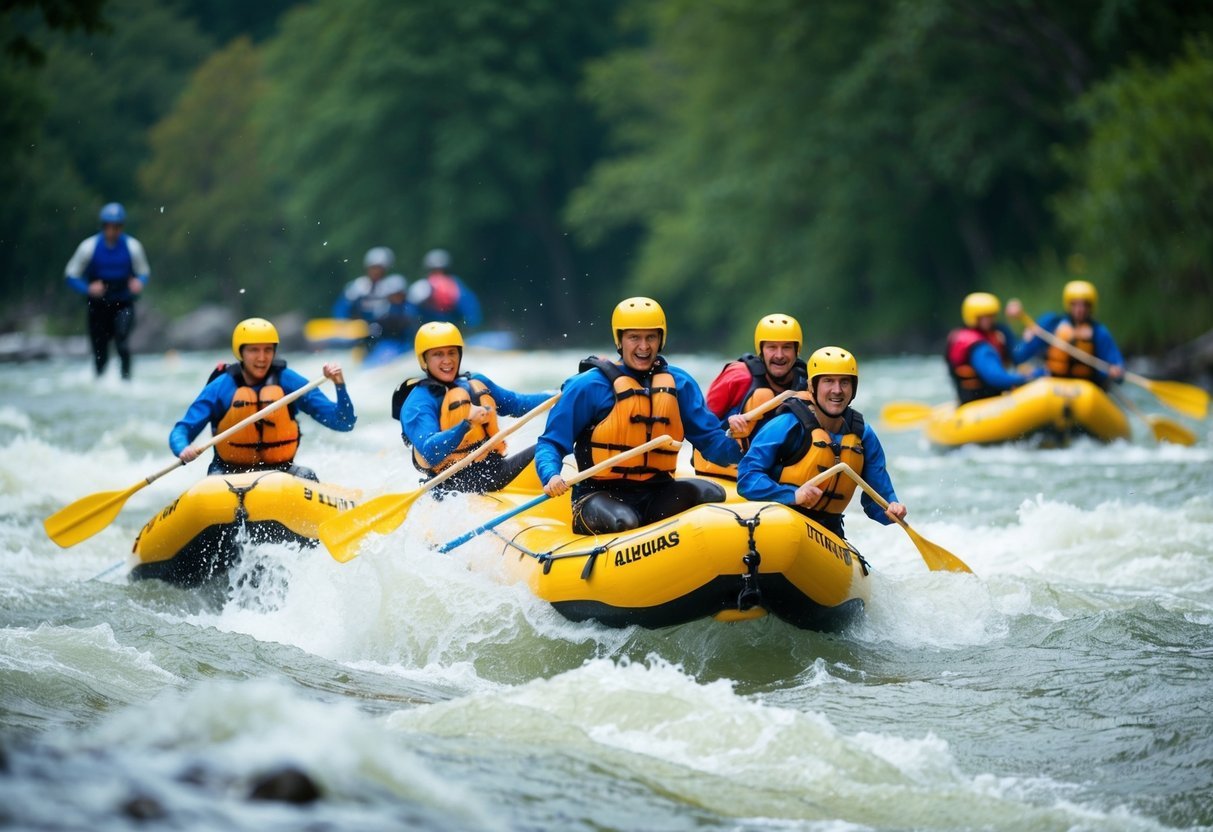
Elite white-water rafting teams employ rigorous training regimens to stay at the top of their game.
They focus on building physical endurance and honing technical skills to navigate challenging rapids with precision and teamwork.
Physical Conditioning
You’ll find top rafting teams hitting the gym hard.
They’re not just working on their arms – it’s all about full-body strength and stamina.
Cardio is key, with teams often running, cycling, or swimming to boost their endurance.
Core strength is crucial for maintaining balance in choppy waters.
Many teams incorporate plank exercises and stability ball workouts into their routines.
Don’t forget about flexibility! Yoga and stretching help prevent injuries and improve paddling form.
Some teams even practice in indoor pools during off-seasons to stay sharp.
Technical Skills
When it comes to technical skills, practice makes perfect.
Top teams spend countless hours on the water, perfecting their paddle strokes and timing.
They drill specific maneuvers repeatedly, ensuring each team member can execute them flawlessly.
Communication is vital in the chaos of rapids.
Teams develop and practice clear, concise commands that can be heard over rushing water.
They often use hand signals as backup.
Many elite rafters also pursue advanced certifications in swift water rescue and first aid.
This not only improves safety but enhances their understanding of river dynamics.
Simulation training is becoming more popular.
Some teams use video analysis to study their technique and identify areas for improvement.
Others participate in advanced courses to learn cutting-edge techniques and stay ahead of the competition.
Impact of Equipment on Performance
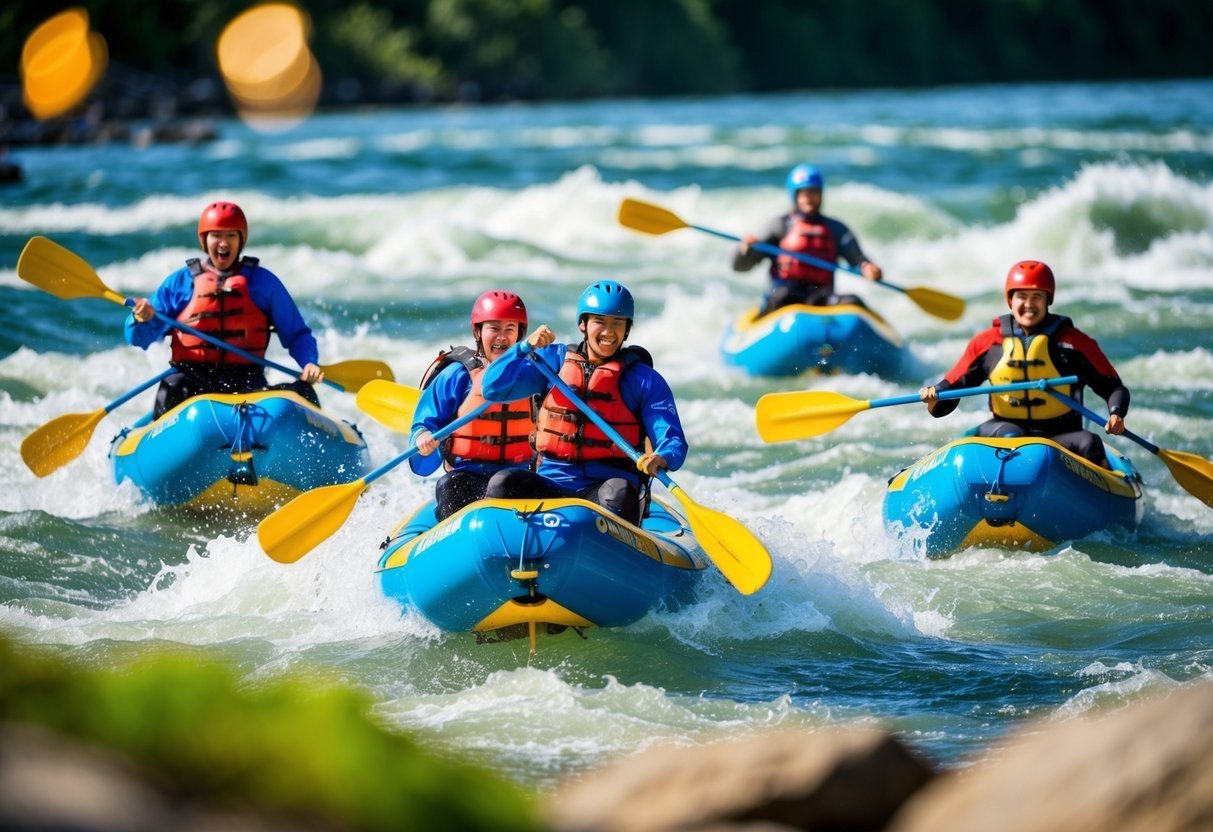
The right gear can make or break a white-water rafting team’s performance.
Cutting-edge equipment enhances safety, speed, and maneuverability, giving top teams a competitive edge.
Advancements in Raft Design
Modern rafts are a far cry from the basic inflatables of yesteryear.
You’ll find high-tech materials like polyurethane-coated fabrics that offer superior durability and puncture resistance.
These rafts are lighter, faster, and more responsive.
Hydrodynamic shapes help teams slice through rapids with less effort.
Some designs feature tapered bows and sterns for improved tracking.
Meanwhile, self-bailing floors quickly shed water, keeping the raft nimble.
Adjustable thwarts and foot cups give paddlers better leverage and control.
This customization allows teams to fine-tune their setup for different river conditions or racing styles.
Safety Gear Innovations
While adrenaline is part of the thrill, safety remains paramount in white-water rafting.
The latest helmets offer enhanced protection without sacrificing comfort or visibility.
You’ll see teams sporting lightweight carbon fiber models with built-in communication systems.
Personal flotation devices (PFDs) have come a long way too.
New designs provide better buoyancy and freedom of movement.
Some even incorporate quick-release harnesses for emergencies.
Throw bags now feature high-visibility rope and ergonomic designs for faster, more accurate rescues.
Teams also use advanced river knives that can quickly cut through entanglements if needed.
Waterproof GPS and communication devices help teams navigate treacherous stretches and coordinate with support crews.
These tech gadgets can make a crucial difference in competition and safety.
Frequently Asked Questions
White-water rafting offers thrilling adventures and competitive challenges worldwide.
From top teams to extreme rapids, there’s a lot to explore in this exhilarating sport.
Who are currently the top competitive white-water rafting teams in the world?
Team Thunder Rapids and Rapid Runners Crew are crushing it on the global stage.
Splash Squad Elite has been making waves with their technical skills.
Cascade Champions and River Rush Mavericks round out the current top five, known for their fearless approach to tough rapids.
Which rivers are known for the most extreme white-water rafting experiences?
You’ll find some of the wildest rides on the Futaleufú River in Chile and the Zambezi River in Zimbabwe.
The North Johnstone River in Australia offers intense rapids through rainforest gorges.
Don’t forget the Colorado River through the Grand Canyon for a mix of thrills and breathtaking scenery.
What are the best spots for white-water rafting adventures in Canada?
Canada’s got some sweet spots for rafting.
The Ottawa River in Ontario is a favorite, offering rapids for all skill levels.
The Kicking Horse River in British Columbia serves up some serious whitewater action.
For a remote adventure, try the Magpie River in Quebec.
Can you list some of the most thrilling class 6 rapids for rafters?
Class 6 rapids are no joke – they’re often considered unrunnable.
The Terminator on the Futaleufú River in Chile is legendary.
Metlako Falls on Oregon’s Eagle Creek is a 100-foot vertical drop.
The Stikine River in British Columbia has several class 6 sections that’ll test even the most skilled rafters.
Where in the US can you find challenging class 5 rapids?
The US has some killer class 5 rapids.
Check out the Upper Youghiogheny in Maryland or the Gauley River in West Virginia.
California’s Tuolumne River offers heart-pounding class 5 sections.
The North Fork of the Payette in Idaho is another top spot for serious whitewater action.
What river holds the title for the toughest white-water rafting in the United States?
Many people consider the Upper Youghiogheny River in Maryland to be the toughest commercially rafted river in the US.
The river has a bunch of class 5 rapids packed into a short stretch.
The Gauley River in West Virginia is a close second, especially during its fall release season when it becomes a beast of churning whitewater.


